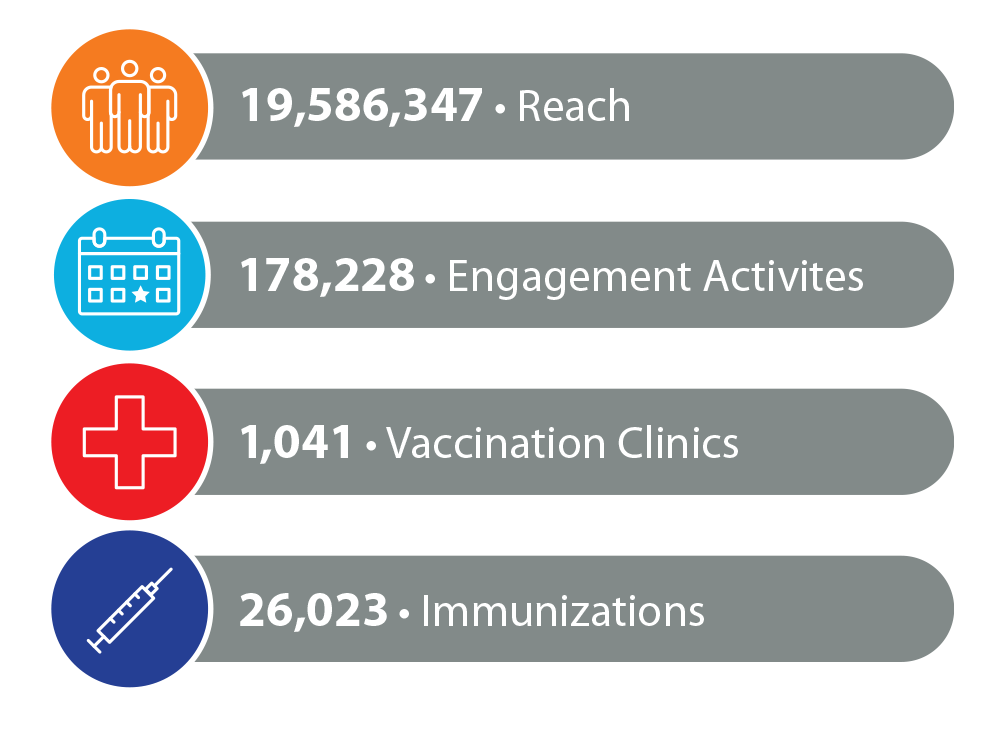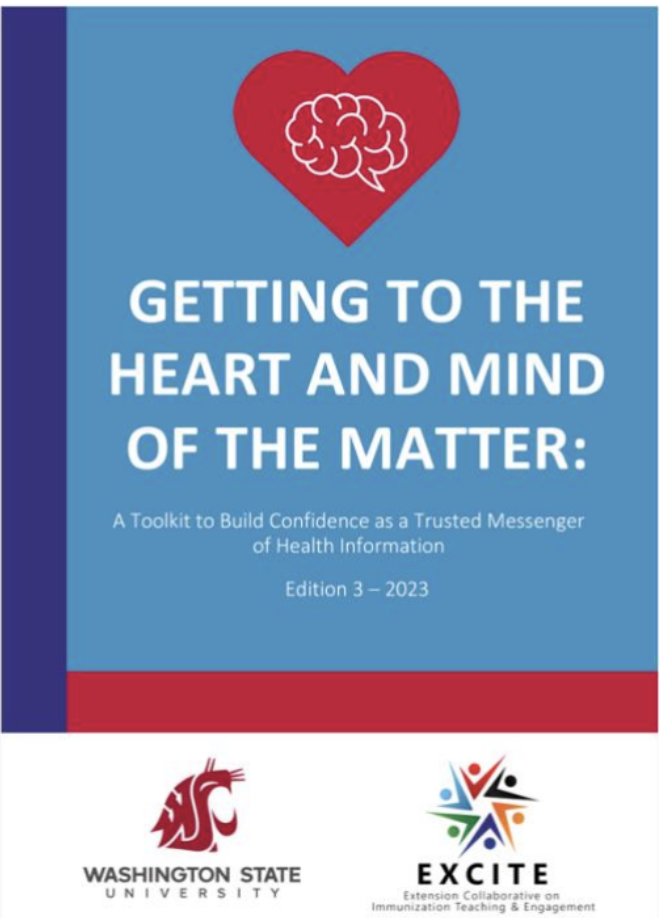In its second year, the Extension Collaboration on Immunization Teaching and Engagement (EXCITE) project—a joint initiative between the CDC and Cooperative Extension—reached major milestones. It successfully concluded two projects and developed a science communication toolkit to assist Extension professionals in immunization education. Facilitated through partnerships with USDA-NIFA, CDC, and the Extension Foundation, the program effectively mobilized the Extension system to address a nationwide need.
In the first two years the EXCITE projects successfully reached 19,586,347 individuals through 178,228 diverse engagement activities, as depicted below. In collaboration with partners, 1,024 vaccination clinics administered 26,023 vaccines, playing a crucial role in the program's overall success.
Brain Science informs Communication Toolkit
Neuromarketing, rooted in brain science, is a powerful tool for Extension professionals in achieving communication goals. This scientific approach leverages insights into how the human brain processes information, enabling communicators to design content that aligns with cognitive responses.

For the EXCITE project, Washington State University utilized this approach to create the "Getting to the Heart and Mind of the Matter" Communication Toolkit, addressing vaccination education needs. This toolkit, accompanied by video modules, empowers Extension professionals to engage as trusted messengers of informed vaccination communication within their communities.
What’s Next:
EXCITE received a significant boost this year, securing an additional $7,552,500 from the CDC. This funding spurred the creation of new projects, extending the program's reach to encompass all adult immunizations.
For a more detailed insight into EXCITE accomplishments and future endeavors, we encourage you to delve into the full Year 2 report. The report not only showcases the program's successes, but also provides valuable insights into the strategies employed and lessons learned. https://8907224.fs1.hubspotuse...E%20REPORT%20(1).pdf

Comments (0)